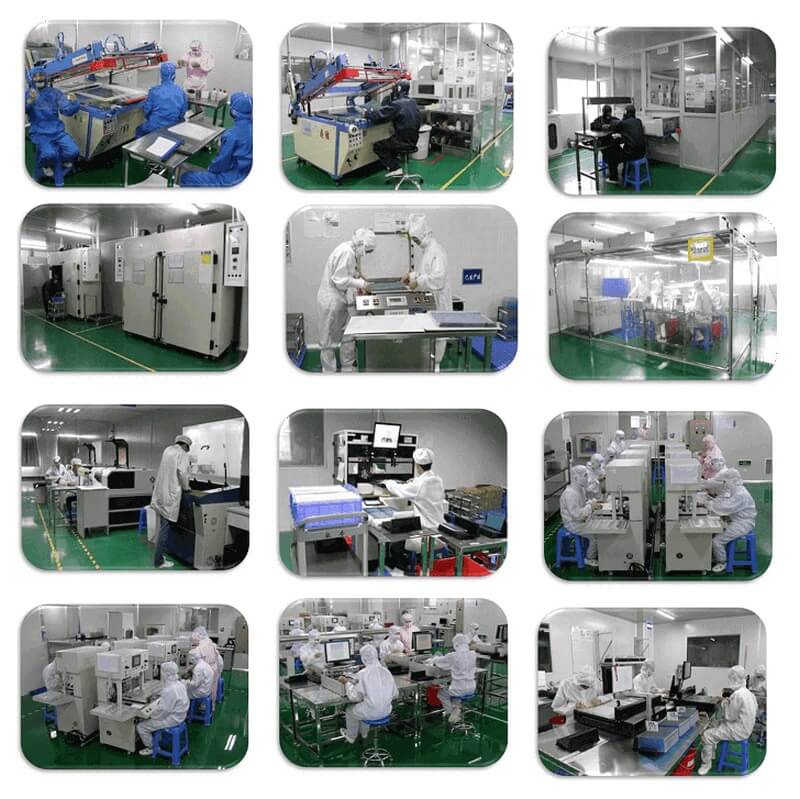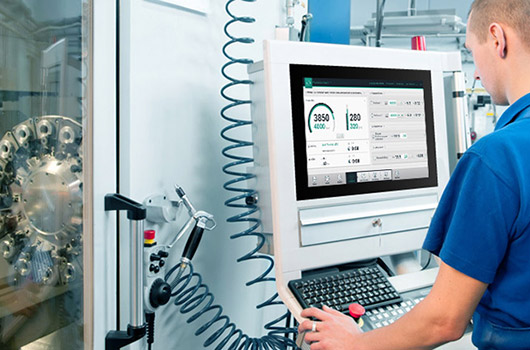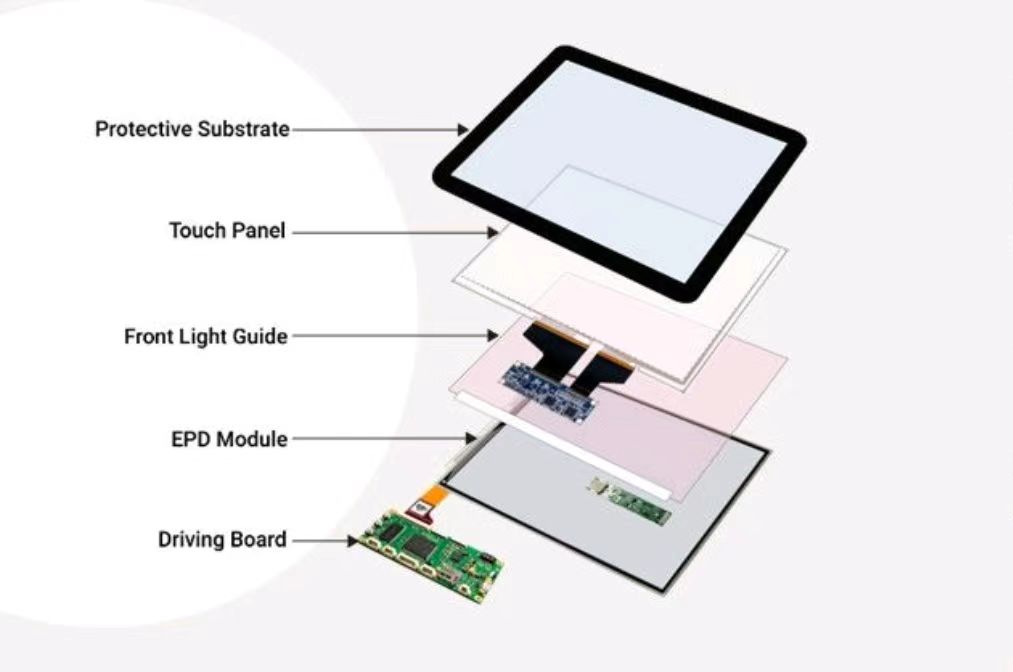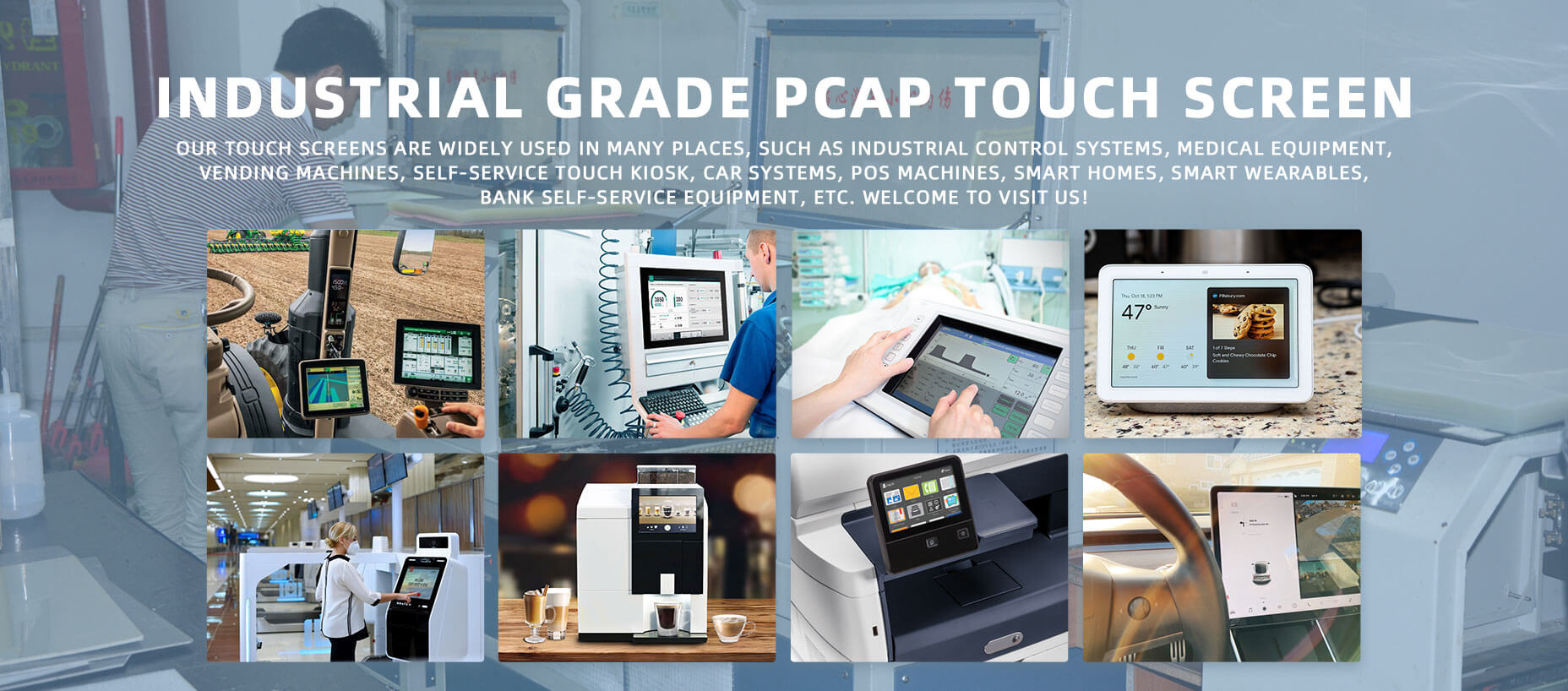News
Revolutionizing Healthcare with Advanced Touch Panel Technology: A Comprehensive Overview
Revolutionizing Healthcare with Advanced Touch Panel Technology: A Comprehensive Overview
Table of Contents
- Introduction: The Role of Touch Panels in Modern Healthcare
- The Key Advantages of Touch Panels in Medical Applications
- Expanding Applications: Touch Panels in Diverse Medical Devices
- Designing Touch Panels for Healthcare: Critical Considerations
- Overcoming Challenges in Implementing Touch Panels for Medical Use
- Emerging Trends: The Future of Touch Technology in Healthcare
- Real-World Success Stories: Touch Panels Transforming Medical Devices
- Frequently Asked Questions About Touch Panels in Healthcare
- Conclusion: The Path Forward in Healthcare Innovation
1. Introduction: The Role of Touch Panels in Modern Healthcare
The integration of touch panel technology in medical devices has become a game changer in the healthcare industry. As hospitals and clinics strive to deliver precise, efficient, and patient-centric care, the demand for intuitive, reliable interfaces continues to grow. By offering enhanced user experiences and improving interaction with complex medical systems, touch panels are playing an essential role in advancing modern healthcare.
2. The Key Advantages of Touch Panels in Medical Applications
Touch panels offer a range of benefits that align perfectly with the needs of medical environments:
2.1. User-Centric Design Enhances Efficiency
Medical personnel often operate under pressure, and user-friendly touch interfaces ensure quick learning and seamless operation, reducing the risk of errors during critical tasks.
2.2. Precision and Responsiveness in Critical Situations
Capacitive touch panels support multi-touch capabilities, enabling simultaneous controls that are particularly useful in surgical applications where precision is paramount.
2.3. Streamlining Operations and Reducing Complexity
Touch panels eliminate the need for multiple physical controls, centralizing device operations and streamlining workflows. This increased efficiency is vital in high-stress medical environments.
2.4. Durability and Hygiene Considerations
Medical-grade touch panels are designed with robust materials that resist wear, scratches, and frequent sanitization. Their smooth surfaces support easy cleaning, minimizing the risk of contamination in sterile settings.
3. Expanding Applications: Touch Panels in Diverse Medical Devices
The versatility of touch panel technology enables its application across a wide spectrum of medical devices:
3.1. Diagnostic Imaging Equipment
Touch panels in devices like MRIs, CT scanners, and ultrasound machines allow operators to adjust settings and view high-resolution imaging with ease, facilitating faster and more accurate diagnoses.
3.2. Patient Monitoring Systems
In critical care settings, touch screens provide real-time access to patient data, allowing for rapid adjustments and decision-making in dynamic environments.
3.3. Robotic Surgery and Minimally Invasive Procedures
Touch interfaces empower surgeons to control robotic systems with precision, enhancing the safety and effectiveness of complex procedures. Fine-tuned controls lead to better patient outcomes and reduced recovery times.
3.4. Electronic Health Records (EHR) and Data Management
Touch panels are increasingly integrated into EHR systems, enabling healthcare providers to update and retrieve patient records with minimal effort, boosting administrative efficiency.
4. Designing Touch Panels for Healthcare: Critical Considerations
Creating touch panels that meet the stringent demands of medical environments requires careful attention to several factors:
4.1. Ergonomics and Usability
The design must prioritize user comfort and accessibility, ensuring that healthcare providers can interact with devices effortlessly, even while wearing gloves.
4.2. Display Clarity and Resolution
High-resolution displays are crucial for medical applications, where clear visibility of data, imaging, and diagnostics is essential. Adjustable brightness and anti-glare features further enhance usability.
4.3. Robustness and Reliability
Healthcare touch panels must withstand harsh conditions, including frequent cleaning with disinfectants, exposure to fluids, and operation in environments with high electromagnetic interference (EMI).
4.4. Compliance with Medical Standards
Devices must meet industry standards like IEC 60601 and EN 60601, ensuring they are safe and effective in healthcare settings. Additionally, touch panels must be designed for long-term reliability.
5. Overcoming Challenges in Implementing Touch Panels for Medical Use
Although touch panel technology offers vast potential in healthcare, some challenges remain:
5.1. High Initial Costs and ROI Considerations
While the long-term benefits are clear, the upfront investment can be a barrier, especially for smaller facilities. A well-planned implementation strategy can address these concerns.
5.2. Technical Compatibility and Customization
Ensuring that touch panels are seamlessly integrated with existing systems requires advanced customization and technical expertise, especially when retrofitting older equipment.
5.3. Training and Adaptation
Adopting new touch-based interfaces necessitates adequate training for medical staff. Tailored onboarding programs can accelerate the learning curve and ensure smooth transitions.
6. Emerging Trends: The Future of Touch Technology in Healthcare
Looking ahead, the evolution of touch panel technology is set to further revolutionize medical care:
6.1. Integration of AI and Machine Learning
AI-driven touch interfaces will enhance diagnostic capabilities and predictive analytics, allowing healthcare professionals to make data-driven decisions in real-time.
6.2. Haptic Feedback and Gesture Control
Next-generation touch panels may incorporate haptic feedback and gesture control, providing users with more tactile, interactive experiences that improve precision and user satisfaction.
6.3. Advanced Security and Data Protection
As digital health records and connected devices become standard, touch panels will increasingly feature robust encryption and biometric authentication to secure sensitive patient data.
7. Real-World Success Stories: Touch Panels Transforming Medical Devices
The impact of touch technology in healthcare is illustrated by several success stories:
7.1. Enhanced Diagnostic Efficiency in Radiology
A leading radiology center adopted touch interfaces for MRI systems, reducing diagnostic times by 25% and enhancing image accuracy, leading to better patient care.
7.2. Streamlined Surgical Operations with Robotics
A state-of-the-art surgical facility integrated touch-controlled robotic systems, resulting in more precise procedures and faster patient recovery times. The technology also contributed to a 20% reduction in surgical errors.
8. Frequently Asked Questions About Touch Panels in Healthcare
Q1: What types of medical devices commonly use touch panel technology?
A: Touch panels are integral to diagnostic imaging devices, patient monitoring systems, surgical tools, and electronic health record management platforms.
Q2: How does touch panel technology improve patient care?
A: By enabling faster, more accurate device control, touch panels streamline workflows and enhance the overall efficiency of medical operations, allowing healthcare providers to focus more on patient care.
Q3: What makes touch panels suitable for medical environments?
A: Medical-grade touch panels are designed for durability, hygiene, and ease of use, featuring antimicrobial surfaces and compliance with healthcare standards.
Q4: How is the technology evolving in healthcare applications?
A: The future of touch panels involves AI integration, improved security, and advanced interaction technologies like gesture control and haptics.
9. Conclusion: The Path Forward in Healthcare Innovation
The adoption of cutting-edge touch panel technology in healthcare is more than just a trend—it’s a fundamental shift towards smarter, more efficient patient care. As hospitals and clinics continue to modernize, touch interfaces will become even more integral to medical devices, driving improvements in accuracy, speed, and overall care quality. At DINGTouch, we remain at the forefront of this transformation, providing customized solutions that empower healthcare providers to deliver the best possible outcomes for their patients. Embracing these advancements is key to shaping the future of healthcare, making it more connected, intuitive, and responsive than ever before.
DINGTouch:Committed to continuous innovation and improvement of product quality to meet customers' high requirements and expectations.
DINGTouch is a manufacturer that provides high quality touch screen panels. Focus on the design, manufacturing and sales of touch screen panels, and are committed to providing customized solutions that satisfy customers.
DINGTouch: In the process of customizing touch screen panels, we focus on close cooperation and communication with customers. Understanding customers' needs and providing customized solutions will meet customers' individual needs. The company's products are favored by customers for their high quality and reliability, and provide them with the best touchscreen panel solutions.
At DINGTOUCH, we are the world's leading touchscreen manufacturer, helping businesses around the world take advantage of this exciting technology. For more information, please visit the home page now.
Find the DINGTouch technical team to achieve the success of your company's new project.
How to choose touch screen customization?
DINGTouch is a company specializing in the R&D and production of touch screen technology, headquartered in Shenzhen, China. As a professional touch screen supplier, DINGTouch is committed to providing high-quality, stable and reliable touch screen products to meet the diverse needs of customers. We continue to carry out technological innovation and product optimization to ensure that its touch screen products have good sensitivity, accuracy and durability.
In addition to the products themselves, we also focus on cooperation and communication with customers, and are committed to providing customized solutions and excellent after-sales services. Through continuous efforts to improve product quality and customer satisfaction, we have established a good reputation in the touchscreen industry and won widespread market recognition.
What DINGTOUCH can do:
• PCAP maximum size 65”
• Multi-touch (Touch screen can be customized to your needs.)
• Optical bonding service/air bonding
• LCD interface: HDMI/RGB/MIPI/LVDS/EDP, etc.
• PCAP interface: IIC/USB interface
• CTP can customize the cover glass surface treatment process AG (anti-glare), AR (anti-reflection), AF (anti-fingerprint), waterproof, and glove touch
• Supports 0.55 mm-12 mm coverslip touch.
• Support operating temperature: -40℃-90℃.
Dingtouch Industrial Capacitive Touch Screen Manufacturer
In conclusion, Dingtouch as a professional touch screen manufacturer with more than 10 years touch screen experience.We have many capacitive touch screen. Such as5 inch touch screen,7 inch touch screen,10.1inch touch screen,15 inch touch screen,15.6 inch touch screen,17 inch touch screen,18.5 inch touch screen,19 inch touch screen,21.5 inch touch screen,32 inch touch screen, However, we also welcome to customize your own touch screen . Contact our team today to learn what capacitive touch screen are best for our retail business needs.
Contact us NOW! sales@szdingtouch.com

RELATED NEWS
- Customer support2021-03-26
- Industrial Touch screen for Kiosks and V2021-04-08
- How are touchscreen manufactured2021-04-09
- Why a Touch Screen Overlay is a Good Ide2021-04-10
- Get Customized Touch Screen Panel in Onl2021-04-13
CATEGORIES
CONTACT US
Contact: Dingtouch
Phone: +8615815536116
Tel: +8615815536116
Email: sales@szdingtouch.com
Add: Building A, Bailu Plaza, No. 48, Gonghe Industrial Road, Gongle Community, Xixiang Street, Baoan District, Shenzhen,China. 518126





 Dingtouch
Dingtouch